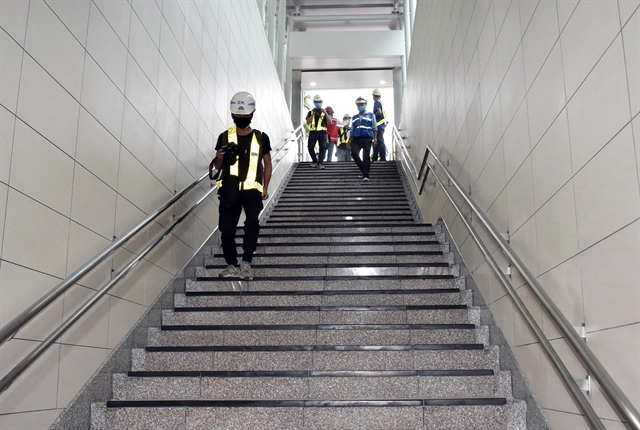 Society
Society


|
| A four-floor underground terminal has been completed near the Opera House in HCM City. The terminal links Nguyễn Huệ and Đồng Khởi streets under the Bến Thành-Suối Tiên Metro Line 1. VNA/VNS. Photo Tiến Lực |
HCM CITY — The HCM City Department of Planning and Architecture has submitted suggestions to city authorities for underground space planning for the 930-ha city centre comprising Districts 1 and 3 and and the Thủ Thiêm new urban area in District 2, according to Thanh Niên (Young People) newspaper.
The underground spaces will connect to areas near metro lines, according to the department.
Nguyễn Thanh Nhã, head of the department, said that an international contest to seek ideas for the underground space planning has been approved by the People's Committee.
Architect Khương Văn Mười, former chairman of the HCM City Association of Architects, said that facilities in the underground space would relieve pressure above ground and provide additional parking space as well security and defense.
Underground spaces connecting metro lines and public transport vehicles will be important, and the main metro stations should have many services, with underground tunnels connecting markets, trade centers, and others, he said.
The city's current planning projects include underground space at Quách Thị Trang Square and the 23.9 park that will connect to metro stations in the Bến Thành area in District 1.
On the streets of Lê Lợi, Nguyễn Huệ, and Hàm Nghi, more services will be developed to attract tourists, and on Tôn Đức Thắng Street, a parking area will be built and a pedestrian street will connect the metro station in the Ba Son area and waterway transport along the Sài Gòn River.
The basements of hotels and shopping centres along these streets should be connected with each other and to metro lines, experts have said.
Financing is the biggest obstacle for underground space planning, Mười said, adding that the city faces a budget shortfall for above-ground space.
He said the city should call on the private sector for additional investment in underground space planning.
Experts have said that foreign consultants should be hired because they have practical experience in planning and spatial design. However, collecting initial data should be done by a local consultant because they will understand the actual situation and be able to research geological information and collect data for underground projects, Mười said.
While waiting for the complete underground space planning, the city also needs to collect information about existing underground facilities such as parking lots and shopping centres so that new management regulations can be drawn up. VNS